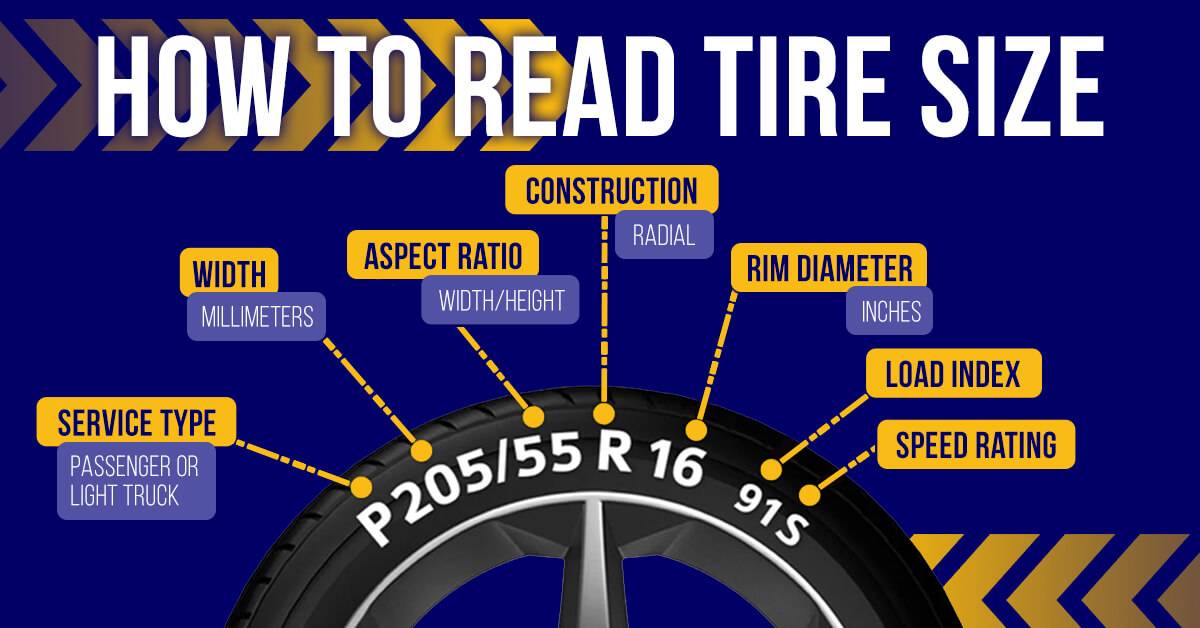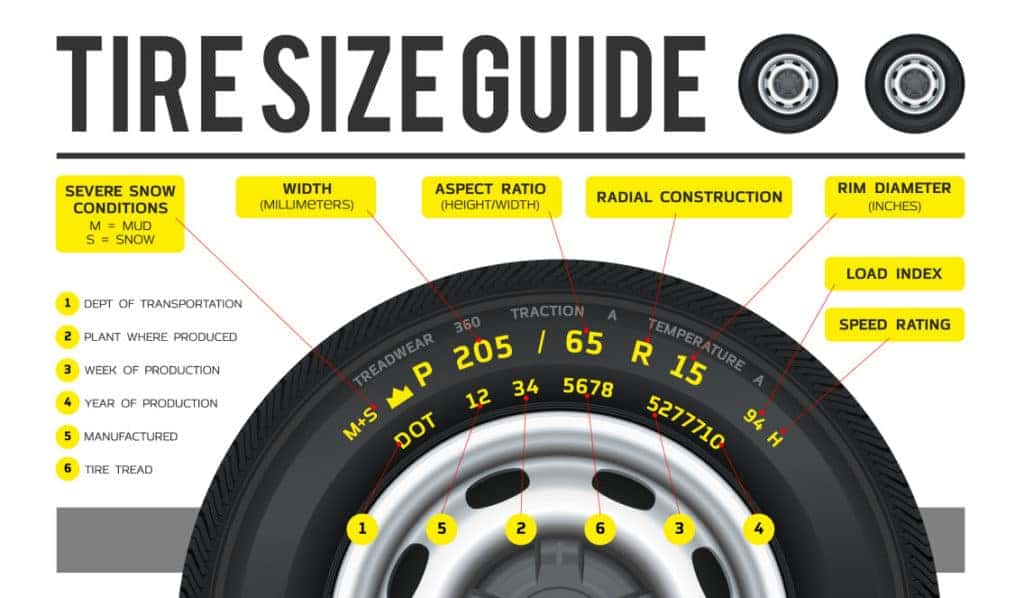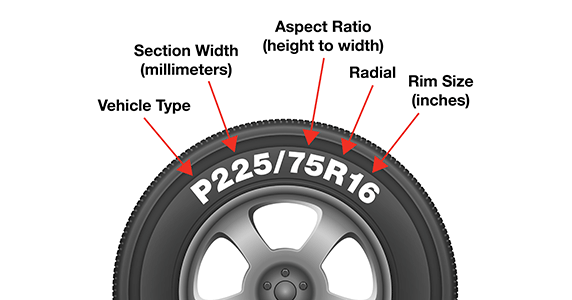Reading car tire size is simpler than you might think. It’s crucial for safety and performance.
Understanding tire size helps you choose the correct tires for your vehicle. Tire sizes include important information about their dimensions and capabilities. Knowing how to read these sizes ensures you pick the right fit, enhancing your driving experience. In this guide, we will explain each part of the tire size code.
This knowledge empowers you to make informed decisions, whether you’re buying new tires or checking the ones you have. Dive in to learn more about reading car tire sizes and why it matters for every driver.

Credit: dandrcarcare.com
Introduction To Tire Size
Tire size is very important. It affects your car’s safety and performance. Using the correct tire size can improve fuel efficiency. It also ensures that your car handles well on the road.
Using the wrong tire size can cause problems. Your car might not handle well. The tires could wear out faster. This can lead to higher costs. Always check your tire size before buying new tires.
You can find your tire size on the tire’s sidewall. It’s a series of numbers and letters. For example, 205/55R16. This code tells you the tire’s width, aspect ratio, and diameter. You can also check your car’s owner manual. Sometimes, the tire size is on a sticker inside the driver’s door.
Understanding Tire Markings
Car tires have many markings. These are important. One common marking is the tire size. This includes numbers and letters. For example, P215/65R15. The P stands for passenger vehicle. 215 is the tire width in millimeters. 65 is the aspect ratio. This shows the height of the tire sidewall.
R stands for radial construction. This means the tire layers are placed radially. 15 is the rim diameter in inches. Other markings include the load index and speed rating. These are often shown as 95H. The number 95 shows how much weight the tire can carry. The letter H shows the speed rating.
Breaking Down Tire Size Numbers
The tire width is the first number on the tire. It is measured in millimeters. For example, in “205/55R16,” 205 is the width. A wider tire has better grip. But it can affect fuel efficiency. Narrow tires are better for fuel. Balance is key.
The aspect ratio is the second number. It shows the height of the tire’s sidewall. It is a percentage of the width. In “205/55R16,” 55 is the aspect ratio. This means the sidewall is 55% of the width. A lower aspect ratio means a shorter sidewall. This can improve handling. But it can make the ride rougher. A higher aspect ratio means a taller sidewall. This can make the ride smoother.
Decoding Tire Construction
Radial tires are the most common. They have layers of fabric inside. These layers run perpendicular to the wheel. This design gives better grip and lasts longer. Bias ply tires have layers that crisscross. They are less common now. They can handle heavy loads better. But they wear out faster.
Load index shows how much weight a tire can carry. It is a number on the tire’s sidewall. Higher numbers mean more weight. Always check this number. Never overload your tire. It is important for safety.
Speed Rating Explanation
The speed rating of a tire tells you the top speed it can handle. This rating is important for safe driving. If your tire has a low speed rating, it may not be safe at high speeds. Always check the speed rating before buying new tires.
The speed rating is shown as a letter on the tire sidewall. It’s usually after the load index number. For example, in “205/55R16 91V”, the “V” is the speed rating. Each letter stands for a specific speed. Check the tire chart to know the speed your tire can handle. Remember, never drive faster than your tire’s speed rating.
Specialty Tire Sizes
Understanding car tire sizes is essential for safety and performance. Tire size information is found on the sidewall, featuring numbers and letters. These indicate tire width, aspect ratio, and diameter.
Winter Tires
Winter tires are designed for snow and ice. They have deep treads. This helps with grip. These tires are often marked with a snowflake symbol. They are made of special rubber. It stays soft in cold weather. This improves traction on icy roads.
Performance Tires
Performance tires are for high-speed driving. They offer better cornering. These tires have a lower profile. This means less sidewall height. They are made from softer rubber. This provides better grip. But they wear out faster. They also work best in warm weather.
Choosing The Right Tire Size
Choosing the right tire size is very important. The tire size affects your car’s safety. It also impacts how your car performs on the road. The tire size is usually written on the side of the tire. It might look like a bunch of numbers and letters. These numbers and letters tell you about the tire’s width, height, and diameter. Width is the first number. Height is the second number. Diameter is the third number. Always make sure to pick the correct tire size for your car.
The tire size has a big impact on vehicle performance. Incorrect tire size can make your car less safe. It can also change how your car handles. Smaller tires can make your car move faster. Bigger tires can make your car slower. But bigger tires can also give a smoother ride. Always choose the best tire size for your car’s needs.

Credit: www.bmwofstratham.com
Common Tire Size Mistakes
Many people misread tire numbers. They often confuse the width, ratio, and diameter. For example, P215/65R15 means the tire width is 215mm. The ratio of the height to width is 65%. The diameter is 15 inches. Always read each part carefully. Check the sidewall for the correct numbers. Do not rush this step. It is easy to make mistakes.
Selecting the wrong tire size can be dangerous. It can affect your car’s performance. It may also lead to uneven wear. Always choose the size recommended for your car. You can find this in your car’s manual. You can also check the door jamb. This information is often listed there. Never guess the size. Always verify it first.
Tips For Maintaining Proper Tire Size
Check your tires often. Look for wear and tear. Measure the tread depth. Use a penny to check. Insert it into the tread. If you see all of Lincoln’s head, the tread is too low. Check tire pressure too. Low pressure can be unsafe. Overinflated tires can wear out faster. Always follow the car’s manual. It has the right pressure.
Ask a professional if unsure. They know about tires. They can check your tires. They can fix problems. They can tell you the right tire size. Follow their advice. They can help keep you safe.

Credit: www.monro.com
Frequently Asked Questions
What Does 225/65 R17 Mean?
225/65 R17 indicates tire dimensions. 225 is the width in millimeters. 65 is the aspect ratio. R signifies radial construction. 17 is the wheel diameter in inches.
How Do You Read Tire Size For Dummies?
Read tire size on the sidewall. Example: “P215/65R15” means tire type, width, aspect ratio, construction, and diameter.
What Do The 3 Numbers Mean On Tire Size?
The three numbers on a tire size represent width, aspect ratio, and diameter. Width is in millimeters, aspect ratio is a percentage, and diameter is in inches.
What Does 215 50 R17 Mean?
The numbers 215 50 R17 describe a tire’s dimensions. “215” indicates width in millimeters. “50” represents the aspect ratio, the height is 50% of the width. “R17” signifies the tire has a radial construction and fits a 17-inch wheel.
Conclusion
Understanding tire sizes is crucial for car maintenance. It helps you choose the right tires. This ensures safety and performance on the road. Now, you know what those numbers and letters mean. You can read tire size easily. Next time you need new tires, you are prepared.
Remember, correct tire size matters. It affects your car’s handling and fuel efficiency. Stay informed, stay safe.

